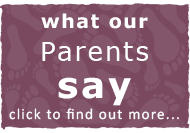Head lice are tiny wingless insects that live in human hair. They are common, particularly in children.
Exclusion period
A female head louse lays eggs by cementing them to hairs (often close to the root), where they are kept warm by the scalp. The eggs are pinhead-size and difficult to see.
After 7-10 days, the baby lice hatch and the empty eggshells remain glued in place. These remains are known as nits. Nits glisten white and become more noticeable as the hair grows and carries them away from the scalp.
Symptoms
In most cases, itching is the main symptom of head lice. It is not caused by the lice biting the scalp but by an allergy to the lice. However, not everyone experiences itching.
It’s not always easy to see head lice, so detection combing is the best way of finding head lice. This involves using a special fine-toothed head lice comb (with tooth spacing of less than 0.3mm to trap the smallest lice) to comb through the hair. It works better on wet hair, but can be used on dry hair.



